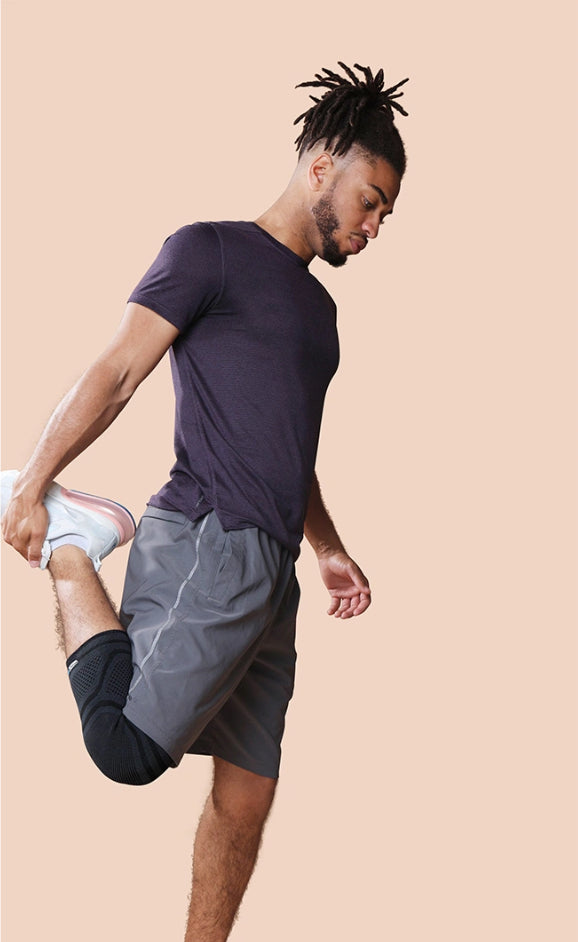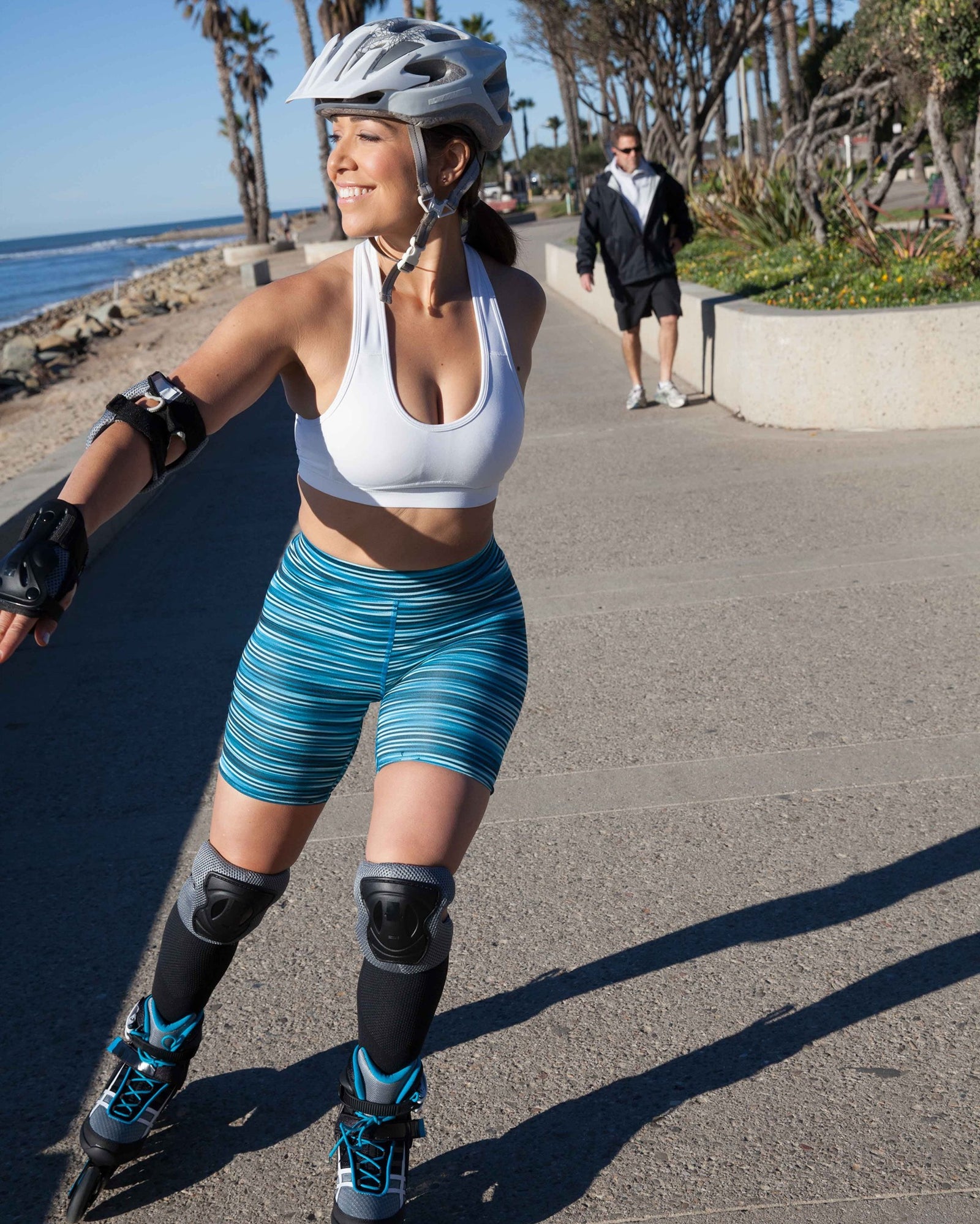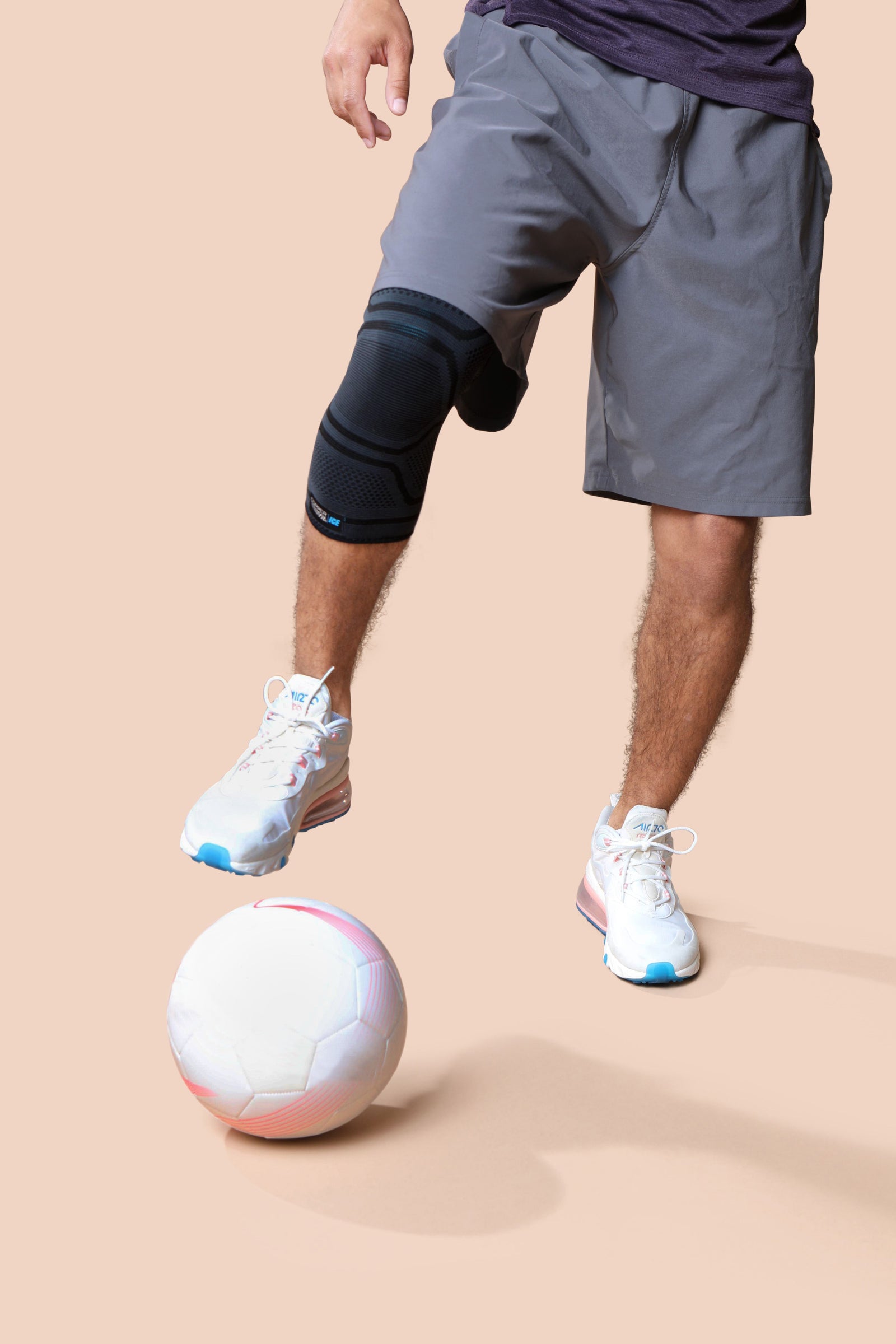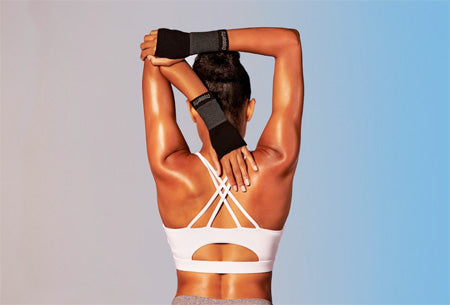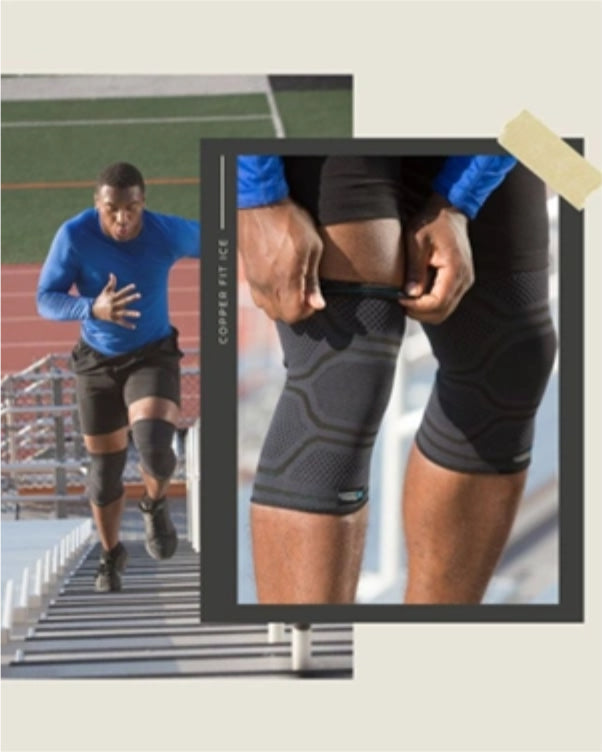
Key Takeaways
- Don’t stretch a pulled muscle too soon. Give your body time to start healing before adding tension.
- Use cold therapy, light compression, and gentle movement early on to support recovery and reduce discomfort.
- Return to stretching gradually, starting with range-of-motion exercises once soreness starts to ease.
If you’ve ever pulled a muscle during a workout or while going about your day, you know the feeling. One moment you’re moving normally, and the next, something tightens, twinges, or seizes up, leaving you sore, stiff, or out of commission.
It’s a common part of active life. Whether you’re lifting weights, chasing your kids, or just stretching the wrong way, muscle strains can sneak up on anyone. But once it happens, the first question most people ask is: Should I stretch it out or rest it?
The truth is, it depends. Muscle recovery isn’t one-size-fits-all, and doing the wrong thing too soon can actually make the situation worse. You’re not alone in wondering what to do. And the good news is, there’s a smarter, more effective way to support your recovery.
What Exactly Is a Pulled Muscle?
A pulled muscle or muscle strain happens when the muscle fibers are stretched beyond their limit. Instead of a clean stretch and release, those fibers develop tiny tears, which can trigger soreness, stiffness, and reduced function.
Strains range in severity:
- Mild strains feel like soreness or tightness with light discomfort.
- Moderate strains involve more tearing and may limit your movement or strength.
- Severe strains can mean partial or full tears, sharp pain, and a longer recovery.
These injuries are common after overexertion, skipping a proper warm-up, pushing too hard when fatigued, or making sudden, awkward movements.
Common symptoms include soreness or tenderness, tightness in the muscle, swelling or a “knotted” sensation, and limited range of motion. Knowing what you’re dealing with is the first step in giving your body the right kind of care.
Muscle Recovery vs. Muscle Strain: How To Tell the Difference
Not every ache is a pulled muscle. Here's how to get a better read on what you're feeling:
- If discomfort fades after a few days, it's likely general muscle soreness from exertion. If it lingers or worsens, it's more likely a mild to moderate strain.
- A small, focused area of tenderness is often a strain, while large areas of soreness (like across the back or legs) usually signal muscle fatigue.
- A popping sound, visible dent, or sudden intense discomfort may indicate a more serious strain and needs medical attention.
Trust how your body feels. Pain that sticks around is worth paying attention to.
Should You Stretch a Pulled Muscle?
So, should you stretch a strained muscle? In most cases, not right away. While it’s tempting to “stretch it out,” doing so too early can actually put more stress on the damaged fibers and make things worse.
When a muscle strain happens, your body responds immediately with tightness, swelling, and tension. It’s a natural protective reaction that is designed to limit movement and prevent further injury. Trying to stretch through this can extend your recovery time.
For minor strains, light movement like walking or gentle mobility can help support circulation and prevent stiffness, but avoid deep or static stretches in the first few days.
The main goals early on are to reduce tension, ease discomfort, and protect the injured area. Your body is working hard to heal, so it’s important to give it the support and patience it needs.
When Is It Safe To Start Stretching Again?
Once the initial tightness and soreness start to ease — usually after three to seven days for mild strains — it may be safe to reintroduce light stretching. Moderate strains can take one to three weeks before stretching is appropriate.
But the real guide is your own body. If the muscle feels stiff but not sore, and your range of motion is improving without discomfort, you may be ready to ease back in.
When starting out with stretching a pulled muscle, remember to start small. Begin with gentle range-of-motion movements, like arm circles or leg swings. If that feels okay, progress to light static stretches, held without forcing the muscle past its limit.
And remember, if anything feels sharp or “off,” back off and give it more time. For severe strains or if you're unsure, it's smart to check in with a physical therapist or medical professional.
What To Do Instead of Stretching Right Away
The first 48 to 72 hours after a strain are critical for recovery, and this is where supportive, low-impact strategies shine.
Here’s what your body needs:
- Rest: Take pressure off the muscle. Skip movements that cause discomfort.
- Cold therapy: Apply ice packs (15 to 20 minutes at a time) to calm tension and reduce swelling.
- Compression: Light compression gear can help support healthy blood flow and soothe discomfort.
- Elevation: If possible, keep the area elevated to reduce fluid buildup.
- Stay hydrated: Water helps support the body’s repair processes.
- Get enough protein: Muscles need amino acids for healing. Don’t skip your meals.
As discomfort fades, heat therapy can be helpful to relax tight areas and encourage circulation, especially in older or lingering strains. But timing matters: cold first, heat later.
Gentle Mobility and Recovery Techniques for Pulled Muscles
Once you’ve made it through the first few days, it's time to think about reintroducing movement, not pushing your limits. Start with dynamic mobility — light, controlled motions that activate the surrounding muscles without straining the injured one. Think: arm swings, leg lifts, and ankle rolls.
Light self-massage or percussive therapy can also support circulation and help your body relax residual tension. Just avoid direct pressure on the injured spot early on.
Other low-impact strategies that can help a strained muscle include walking, which promotes natural muscle movement without overload, and water movement. Standing in a pool, gentle kicking, or water walking can be a great way to restore mobility without putting too much pressure on your muscles and joints.
How To Prevent Muscle Pulls in the Future
Muscle strains aren’t always preventable, but with a few simple habits, you can significantly reduce your risk:
- Warm up before workouts: Wake up the muscles, raise your body temperature, and prep your joints.
- Cross-train: Mix up activities to avoid repetitive stress and support balanced muscle development.
- Build strength gradually: Increase intensity in stages, not leaps.
- Cool down and stretch after activity: When muscles are warm, gentle stretching can promote flexibility and ease tension.
- Stay hydrated and well-fed: Dehydrated or under-fueled muscles fatigue faster and recover more slowly.
These simple routines help your body stay resilient, adaptable, and ready for what’s next.
FAQ
How do I know if my pulled muscle is serious?
If the discomfort improves after a few days, it’s likely mild. But if you see swelling, bruising, or can’t use the muscle at all, it’s time to get it checked out.
Can I use heat right after pulling a muscle?
Not typically. Cold therapy is the better option in the first 48 to 72 hours to ease tension. Heat can help later on with stiffness or tightness.
Is it safe to massage a pulled muscle?
Gentle massage may help once the initial discomfort fades. But avoid putting pressure on the muscle too early, which can worsen the strain.
The Bottom Line
At Copper Fit, we know how frustrating it is to feel held back by discomfort, especially when you're trying to stay active. A pulled muscle can throw off your rhythm, but it doesn’t have to sideline your progress.
The key is knowing when to rest, when to move, and how to support your body in every stage of recovery. Stretching can absolutely help, but only when the time is right. Give your muscles time to heal, then reintroduce movement with patience and purpose.
Our approach is always body-first. With the right recovery habits, smart support, and a little time, you’ll be back to moving with strength and confidence. You’ve got this, and we’re right here with you.
Sources:
Muscle strains - Symptoms and causes | Mayo Clinic
Best ways to recover from a muscle strain | Harvard Health
Benefits of Compression Gear | UPMC HealthBeat
RICE Method: Rest, Ice, Compression, & Elevation | Cleveland Clinic

